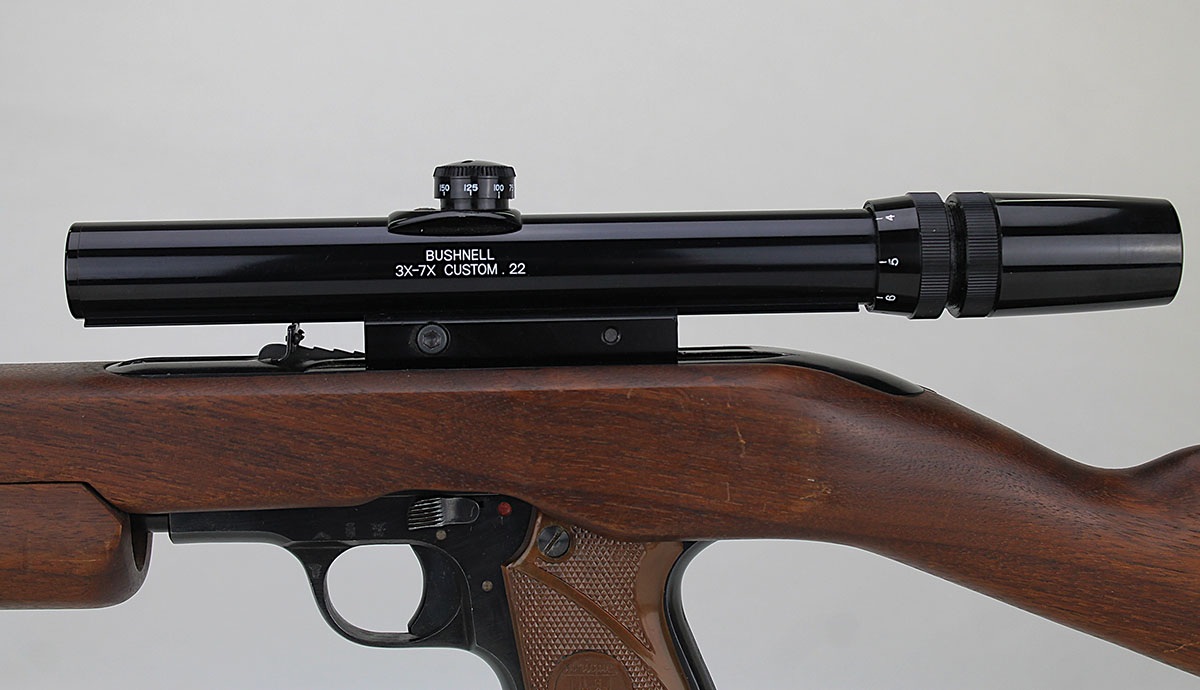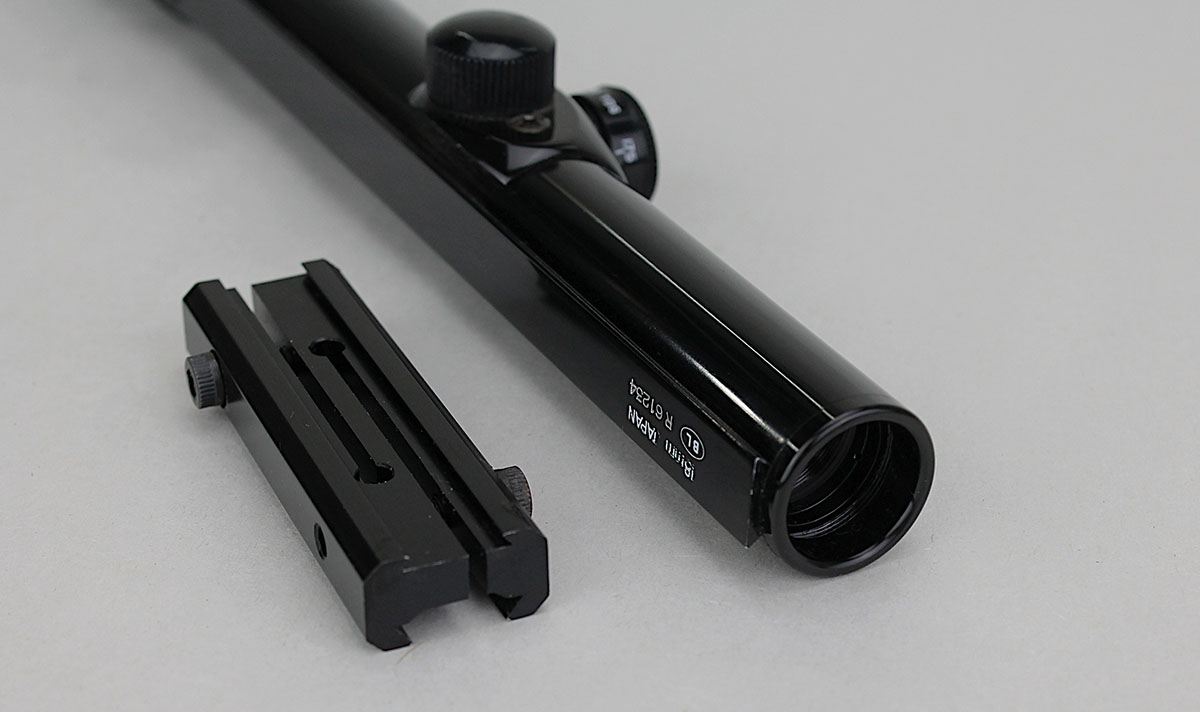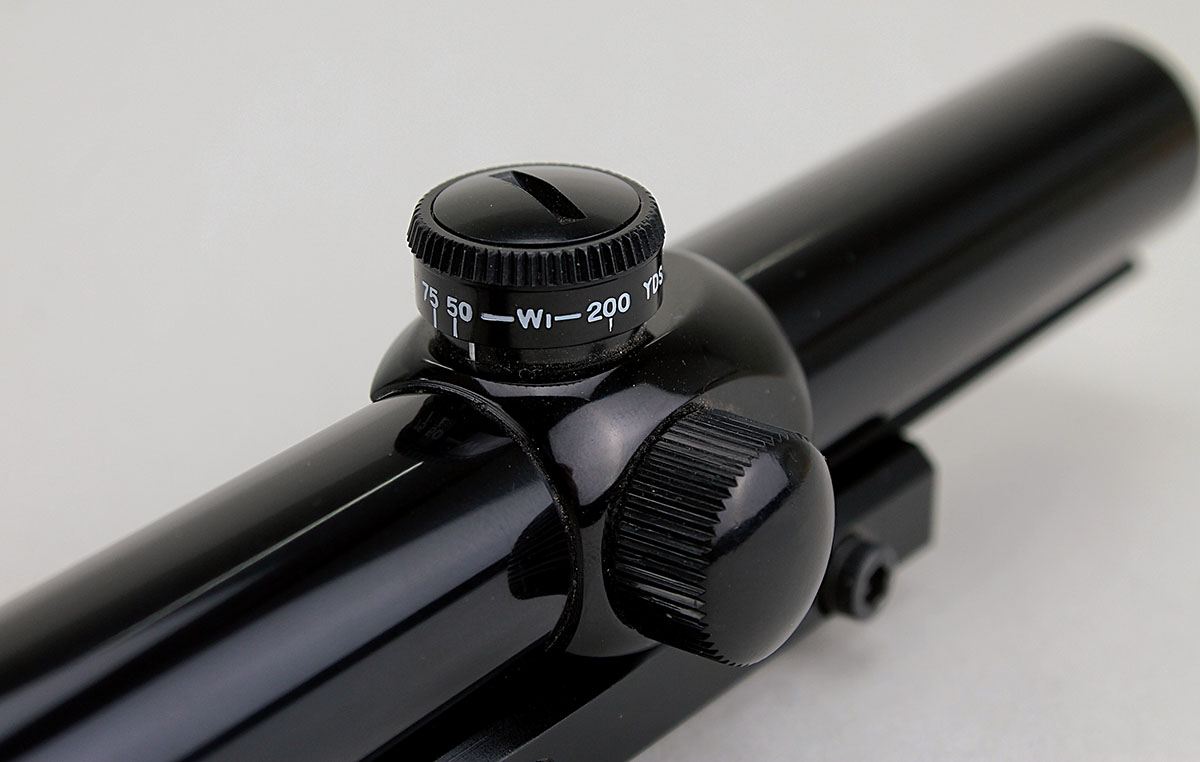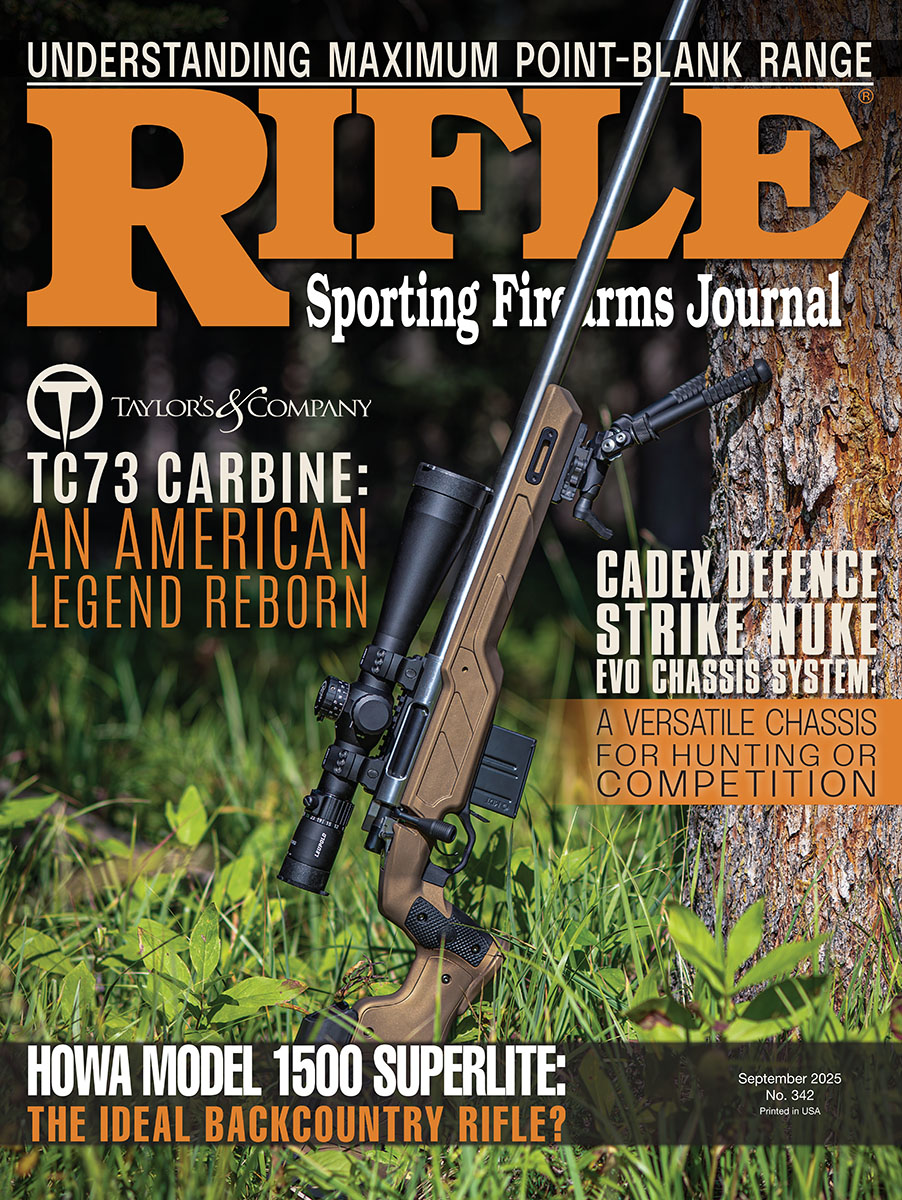Fouling Shots
Bushnell's BDC 3-7x Customm 22
column By: Art Merrill | September, 25


The scope tube outside diameter measures .865 inch, just under the 7/8-inch scope diameter of .875 inch. When Imperial measurements come up wonky, switching to metric is usually helpful; doing so reveals the tubes outside diameter of 22mm and an objective lens diameter of about 18mm, which makes sense, as the scope was made in Japan, and uses the metric system. Japan, by the 1970s, had earned a reputation for making excellent optical lenses, and the glass in the Bushnell is good as far as being adequately clear for its purpose, achromatic and without astigmatism. However, being such a small diameter, it is a bit dark at 7x. Bushnell mounted the reticle second focal plane (SFP), so the reticle does not change size when changing magnification.
The elevation turret markings are unusual, being marked from 50 yards out to 200 yards in 25-yard increments. The Bushnell is an early, inexpensive shot at a dedicated 22 rimfire bullet drop compensator. I could find no readily available instruction manual for the scope online, but it is obvious that the user shoots to zero the scope at 50 yards, then unscrews the plastic cap with a coin. Next, lift off the turret knob, rotate it until the 50 aligns with the reference mark on the turret, then replace both the knob and the cap. What we don’t know is whether the elevation index marks are graduated for standard velocity or high velocity 22 Long Rifle ammunition, which makes a difference in bullet drop downrange, especially at 200 yards. Actual shooting with the two would reveal the answer, but we do have a precursor clue.

Adjacent to the 200-yard mark on this scope is a somewhat enigmatic “W1” mark. Research turned up a snippet that some Bushnell 3X-7X Custom .22 scopes were marked out to 175 yards and bear instead a “W2” mark. It seems possible, then, that scopes marked “175 YDS” and “W2” had elevation graduations for standard-velocity ammunition, and those marked “200 YDS” and “W1” are graduated for high-velocity ammunition. The logic here is that high-velocity ammunition has less drop than standard-velocity ammunition, so 200 yards is more feasible for high-velocity than for standard-velocity ammunition. Alternatively, after shooting (see below), I wonder if perhaps this scope is intended for the 22 Magnum, which produces significantly higher velocity. Those marked “W2” are for 22 Long Rifle high-velocity and standard-velocity ammunition. Unfortunately, I don’t have a 22 Magnum rifle with a grooved receiver or a “W2” marked scope to check this. The answer likely lies within the scope owner’s manual.
However, 200 yards (and 175 yards, for that matter) is overly optimistic for a .22 Long Rifle hunting cartridge in a hunting rifle topped with a hunting scope; even 100 yards would be a long shot. Today, we are pushing well past that boundary. So far, I’ve rung steel targets at 400 yards with guns I’ve put together, and other shooters are reaching out to 600, but we’re utilizing accurized rifles, match-grade ammunition, and scopes of 25x or so magnification. Fifty years ago, marking a 3x-7x rimfire scope with “200 YDS” must have been more of a marketing gimmick than a shot at feasibility.
Testing the Bushnell 3X-7X Custom .22 failed to prove its Bullet Drop Compensating (BDC) concept, if it is indeed intended for the 22 Long Rifle and not the 22 Magnum. Using 38-grain, high-velocity ammunition (1,280 feet per second) and the elevation knob set at “50” with a 50-yard zero, dialing in “75” grouped 75-yard shots two inches below point of aim, and dialing in “100” dropped groups even further, to 3½ inches below point of aim at 100 yards. So far off the mark that I didn’t bother shooting out to 200 yards. Again, the BDC on the scope might be intended for the 22 Magnum cartridge instead. Neither elevation nor windage knobs are click adjustable, instead rotating smoothly without positive indents, which consumed considerable ammunition just to dial in a confident 50-yard zero.
In 1976, the Bushnell 3X-7X Custom .22 scope sold for $24.95. Values today are all over the map, with some selling at gun shows for $10 and others, with original box and papers, bearing absurd online asking prices exceeding $300. Certainly, the material condition of the scope is a factor in price, and a scope lacking the proprietary mount is pretty much useless. To me, even though the BDC feature may or may not work accurately, one of these Bushnell Custom .22 scopes in very good to excellent condition (and with the mount!) is still worth maybe $24.95 in 2025 dollars as a curiosity. It may be worth less or more to you or the next guy or the collector, and I tip my hat to all; there’s a point where curiosity, pragmatism and wallet collide, and it’s different for each of us.


